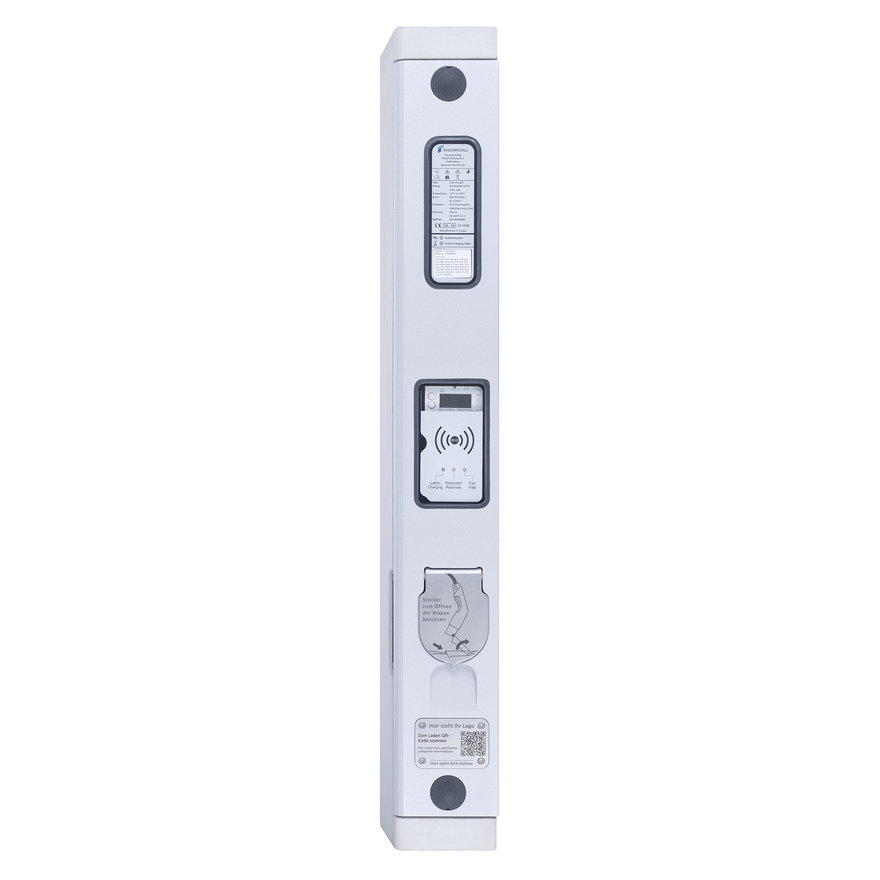From Germany, In-Curb EV Chargers
Nearly invisible infrastructure
Embarassingly, the U.S. is a laggard when it comes to EVs. Stateside they make up just 7.5% of new car sales. In Europe, the figure is 25%, projected to grow to 60% by 2030; in China, it's 60% today. We're getting left in the emissions-free dust.
All of which means new charging station designs and innovations will likely happen overseas. As one example Rheinmetall, a German defense and automotive technology company, has developed this Rheinmetall Curb Charger. In Germany, as in many European countries, they have standards for curb stones. These transition points between the sidewalk and street can be made of natural stone or cast concrete, but have consistent dimensions within municipalities. Rheinmetall's design follows these standards, fitting precisely within the space for a single curb stone.





The charger is encased in concrete, stainless steel and aluminum, and is completely resistant to both the elements and temperature extremes.


Users do need to provide their own charging cables (in Europe, it's common for EV owners to carry their own). They interact with the charger, which is connected to the grid via 4G and/or ethernet, via RFID, QR code or app.

It delivers Level 2 charging, which generally adds 20 to 60 miles of range per hour, and can top off a 60 kWh battery in four to eight hours.

Maintenance is straightforward; the components within are modular and can be popped in and out for servicing.

Last year Rheinmetall rolled out four of these for a pilot project in Cologne. After a year of real-world testing, they found the units performed with 99% reliability and were positively reviewed by users.
One potential downside to the ground-mounted design is that infirm or elderly users may find plugging in difficult. In these shots of an earlier design, where the plug flips up, you can see that it still requires bending over to plug in.


Another potential drawback, if you can call it that, is that the design is so invisible that users may not know it's there. Your standard charging station announces itself by virtue of its freestanding design. Rheinmetall's design, at least for now, is more of an IYKYK kind of thing. But perhaps one day, at least in Europe, people will look down at curbs in parking areas and expect to see these.
Enter a caption (optional)
-
o3Favorite This
-
Q1Comment
K
{Welcome
Create a Core77 Account
Already have an account? Sign In
By creating a Core77 account you confirm that you accept the Terms of Use
K
Reset Password
Please enter your email and we will send an email to reset your password.


Comments
This is a great solution. Since our car NAVs literally can guide us to an open charger, EV chargers don't need high visibility like gas stations. Also, in Europe most level 2 and level 1 chargers require you to bring your own cord, which is easily stored in your frunk. This has two benefits, no messy cords everywhere and in the US a lot of EV charge cords are stolen so people can resell the copper... why people are so desperate they are chopping off EV charge cables to sell for some quick cash at a metal scrap yard is a whole other set of US problems...